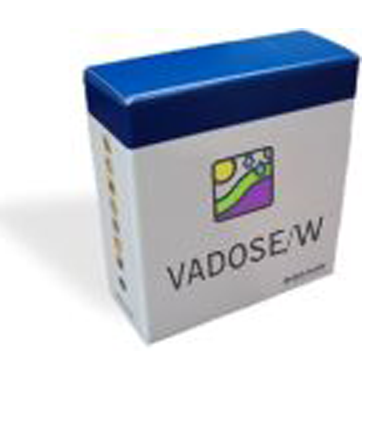 Environmental Impact on Soil Conditions
Environmental Impact on Soil ConditionsUnderstanding unsaturated soil mechanics is now critical for geotechnical engineers performing slope stability analyses, designing soil covers for mine or municipal waste facilities, or determining the effect of agricultural or irrigation projects on groundwater flow. Environmental conditions at the ground surface, such as precipitation, evaporation and transpiration, have been increasingly recognized as having a significant impact on soil behaviour in the unsaturated or vadose zone. In fact, “unsaturated soil mechanics may have more to do with the ground surface moisture flux conditions than it has to do with the thickness of the unsaturated soil zone” (D.G. Fredlund, Geotechnical News, Dec. 2001). So how can you determine the impact of environmental conditions on the unsaturated zone? VADOSE/W provides a solution to this problem.
Comprehensive and Powerful
VADOSE/W is a finite element software product for analyzing flow from the environment, across the ground surface, through the unsaturated vadose zone and into the local groundwater regime. Its comprehensive formulation allows you to analyze both simple and complex problems. For example, you can perform a simple analysis of ground infiltration due to rainfall, or you can build a sophisticated model that considers snow melt and root transpiration, as well as surface evaporation, runoff, ponding, and gas diffusion. You can apply VADOSE/W to the analysis and design of geotechnical, mining, hydrogeological, agricultural, and civil engineering projects.
Easy to Use
A Complete Modeling Solution
VADOSE/W's unique CAD-like interface allows you to generate your finite element mesh by drawing regions on the screen, then interactively apply boundary conditions and specify material properties. You can even estimate the material property functions from easily measured parameters like grain-size, saturated conductivity, saturated water content, and the air-entry value. If you make a mistake, you can correct it using the Undo command.
To create a VADOSE/W model:
- • Define geometry graphically with the mouse or by typing in values. Generate your finite element mesh and then add a soil cover mesh at the surface.
- • Specify material properties and climate data by pasting directly from a spreadsheet, importing from the included databases, or by typing in your own values.
- • Interactively apply boundary conditions as fully coupled to the climate, as a function of time, or as specific values for temperature, head, pressure, total or unit water flux, or a potential seepage surface.
- • Scale data automatically in order to conduct sensitivity studies or to create data suited to your specific site.
- • Define initial conditions for the analysis by drawing an initial water table and nodal temperatures or by using computed results from a previously solved problem.

Infiltration and ponding resulting from high rainfall event

Comparison of upslope and downslope cover base flow on a shallow sloped cover

Upslope saturation profiles during a 365 day simulation in a shallow sloped cover.
Viewing the Analysis Results
Once you have solved your evaporative flux problem, VADOSE/W offers many tools for viewing results. Generate contours or x-y plots of any computed parameter for any time steps. Velocity vectors show flow direction and rate. Transient conditions can be shown as the changing water table position over time. Interactively query computed values by clicking on any node, Gauss region, or flux section. Then export tables of results into other applications, such as Microsoft Excel or Word, for further analysis or to prepare presentations.
Computed Parameters
When VADOSE/W analyzes an evaporative flux problem, it computes data regarding:
- • Precipitation and infiltration
- • Snow accumulation and melt
- • Plant transpiration
- • Ground freezing and thawing
- • Potential and actual evaporation
- • Surface seepage, runoff and ponding
- • Groundwater recharge
Specific computed parameters include:
|
|
Soil surface results data includes (for each time interval, or cumulative since Day 1):
|
|
| Water Balance data includes cumulative: | |
|
|
|
|
|
Cover layer interface results data includes:
|
|
Using VADOSE/W, you can analyze 2D flux boundary problems such as:
- • Design and performance monitoring of single or multi-layered soil covers over mine and municipal waste facilities
- • Development of climate controlled pore-water pressure distributions on natural or man-made slopes for use in stability analyses
- • Determining infiltration, evaporation and transpiration rates resulting from agriculture, irrigation projects, or natural systems
- • Predicting oxygen or radon gas diffusion and decay



